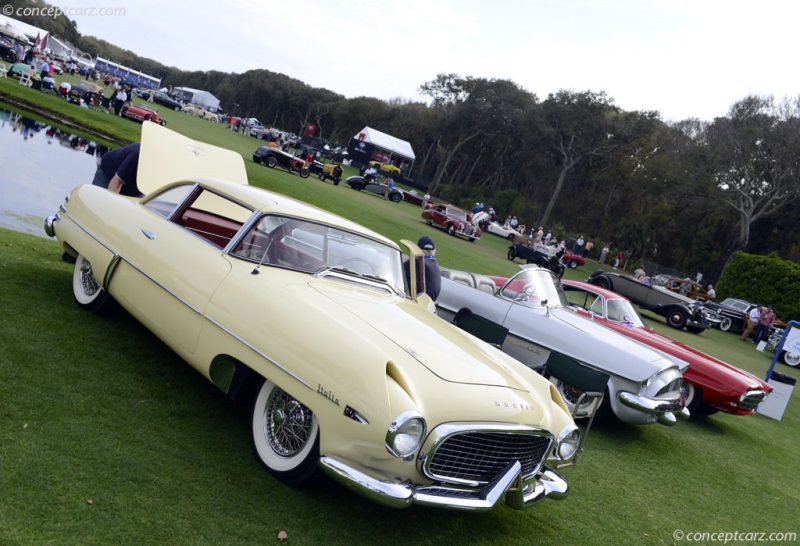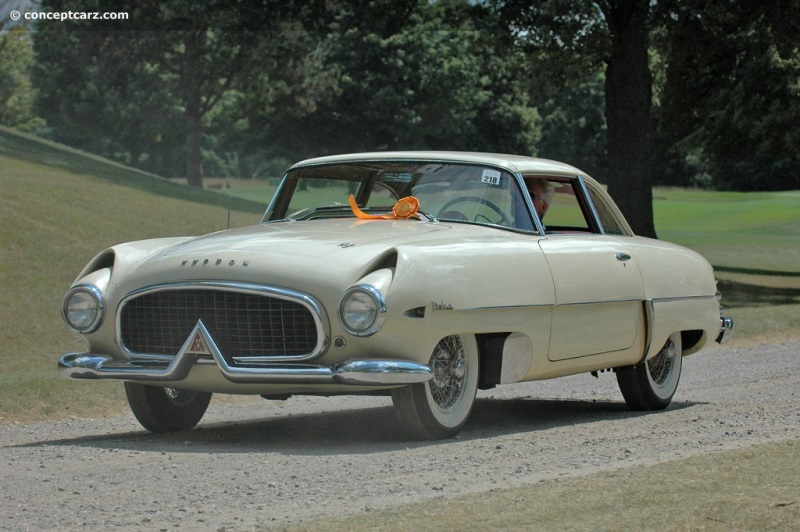The Hudson Motor Car Company began producing automobiles in Detroit in 1909. They prospered during the years that followed, building a durable and attractive product that found favor with the motoring community. During World War II, when civilian automobile production was suspended, they mulled ideas for its postwar automobiles. When the government released manufacturers to resume building civilian automobiles, Hudson was further along with its ideas than most of its competitors. They were smaller than the 'Big Three' and had fewer resources, but they were also more agile and more willing to gamble their future on a bold and daring redesign. In 1948, Hudson introduced an all-new post-WWII model, beating the Big Three to market (who continued to offer post-WWII designs). 
GT Sport Coupe by Touring
View info and historyThe new Hudson automobile had a revolutionary 'step-down' design had a 'Monobilt' semi-unit construction with a perimeter frame that was located outside the passenger compartment and the rear wheels. With the passenger footwells dropping inside the frame, the car had a low center of gravity, which translated to a reduced body height, better handling, and greater performance. This new 'step-down' design, combined with the company's 'Twin-H' dual carburetor package, was very successful in NASCAR and AAA stock car racing circuits. In 1952 alone, the Hudson won 40 of 48 stock car races.By the early 1950s, Hudon's competitors had introduced high-compression V-8 engines, bringing Hudson's competitive advantage to an end. Hudson retaliated with the Hudson Jet in 1954, a compact automobile whose development and marketing ultimately led to the company's merger with Nash-Kelvinator, forming American Motors Corporation (AMC). The Hudson Super Jet Concept
GT Sport Coupe by Touring
View info and historyHudson's Chief Body Engineer, Frank Spring, championed the idea of a lightweight and streamlined coupe that could rekindle the company's competition pedigree. As a halo car, it was intended to revive enthusiasm for the brand, demonstrate the company's ability to build exciting automobiles, compete with European sports cars, gauge public reaction to new styling ideas, and increase the brand's recognition. Spring's idea was rendered as a general concept by Art Kibiger and his small Hudson design staff. A minimum of twenty-five examples had to be constructed if it were to qualify for entry into Mexico's Carrera Panamericana race, where Marshall Teague had just finished sixth overall in a Hudson Hornet. Since Hudson was unable to produce such a small quantity cost-effectively, the job was outsourced to Italy's Carrozzeria Touring.A complete Hudson Jet was sent to Italy, where Touring removed the external bodywork and replaced it with a lightweight, sleek, and streamlined interpretation of the Hudson concept. The work was performed under the supervision of Spring and Hudson's vice president, Stuart Baits. 
GT Sport Coupe by Touring
Chassis #: IT10011
View info and history
Auction entries : 4Known initially as the 'Super Jet,' it had doors that cut 14 inches into the roof, a wraparound windshield, steeply sloped side windows, and rode on Borrani chrome wire wheels. The interior retained the Jet's step-down footwells, which were lowered even further by Touring designers to complement the styling of the low-roof. Spring designed the anatomically shaped seats with two-piece backrests. Air vents fed from a bladder within the seat cushion, forcing cool air into the seatbacks. The flow-through cabin ventilation was another contribution from Spring.Beneath the bonnet was the Jet's 202 cubic-inch inline 'six' with Twin-H carburetion delivering 114 rated horsepower. It was paired with Hudson's three-speed manual transmission that was controlled via a column-mounted shifter.
GT Sport Coupe by Touring
Chassis #: IT10011
View info and history
Auction entries : 4The Hudson Super Jet Concept was built at a reported cost of $28,000 and completed in September 1953. It was shown at numerous Hudson dealerships across the country by late 1953 and was exhibited at automobile shows in the United States and some in Europe, as well as at the International Sports Car Show held in January 1954.The Hudson Italia
With positive reception from the public and approval from management, 25 Jets were shipped to Touring for bodywork. Now known as the Italia, Hudson debuted its new model at the December 1953 Detroit Auto Show. Production, however, did not commence until August 1954, months after Hudson's merger with Nash-Kelvinator and shortly before the closure of Hudson's Detroit factories. As the first deliveries of the Italia were being made, it was an 'orphan' car. The styling of the Italia differed from the Super Jet, being 10 inches lower and having a large inverted 'V' at the center of the front bumper. There were front brake-cooling air intakes atop the headlamps in V-shaped scoops. Another set of brake-cooling ducts for the rear was located just behind the doors, at the leading edges of the skirted fenders. The triple chrome tubes located at the rear fenders contained the taillights. The Super Jet had overdrive; the Italia did not. Additionally, the production Italia had a different instrument panel and a combination of leather-and-vinyl upholstery. Red was a prominent color throughout the interior, used on the leather seat belts, the non-reflecting dash, the deep-pile Italian carpet, and the bucket seats (the seats were red and white leather). Amenities included a radio and a flow-through ventilation system that was fed via a cowl vent.
GT Sport Coupe by Touring
View info and historyThree different foam rubber densities were used for the form-fitting bucket seats, and featured reclining backrests made up of two contoured bolsters, one for the lower back and one for the shoulders. The lower portion of the seats was firmer than the upper portion, with air space between these two cushions to promote air 'breathability.' The only access to the trunk was from within the vehicle. Straps were available to hold cargo, and lockable storage compartments on either side of the platform.The wheelbase measured 105 inches and it had an overall length of 183 inches, a height of 54 inches, and a width of 70 inches. The 202 cubic-inch L-head straight-6 engine had 8:1 compression, dual one-barrel (single choke) downdraft carburetors, and produced 114 horsepower. Drum brakes were located behind all four wheels. Production, Pricing and Reception
The hand-built Italia was priced at US$4,350 at the New York port of entry (POE) or $4,800 FOB Detroit. This meant the Italia was one of the most expensive automobiles in the United States.
GT Sport Coupe by Touring
Chassis #: IT10003
Engine #: IT10001
View info and history
Auction entries : 1Hudson sent what is believed to have been 50 cars to Italy to be converted into the Italia. Hudson dealers began taking orders on September 23, 1953, and as many as 19 firm orders were received. The poor reception was attributed to the high price tag, the company's financial woes, and changes in consumer preferences. Approximately three months after dealers began taking orders for the Italia, Hudson Motors and Nash-Kelvinator Corporation announced a merger to form American Motors Corporation (AMC). By May 1954, Hudson was completely consolidated under AMC, and all Hudson dealers soon received an announcement stating a deadline for pre-paid orders from customers for the cars assembled in Italy. It is believed that total production reached 26 units.
by Daniel Vaughan | Jun 2024
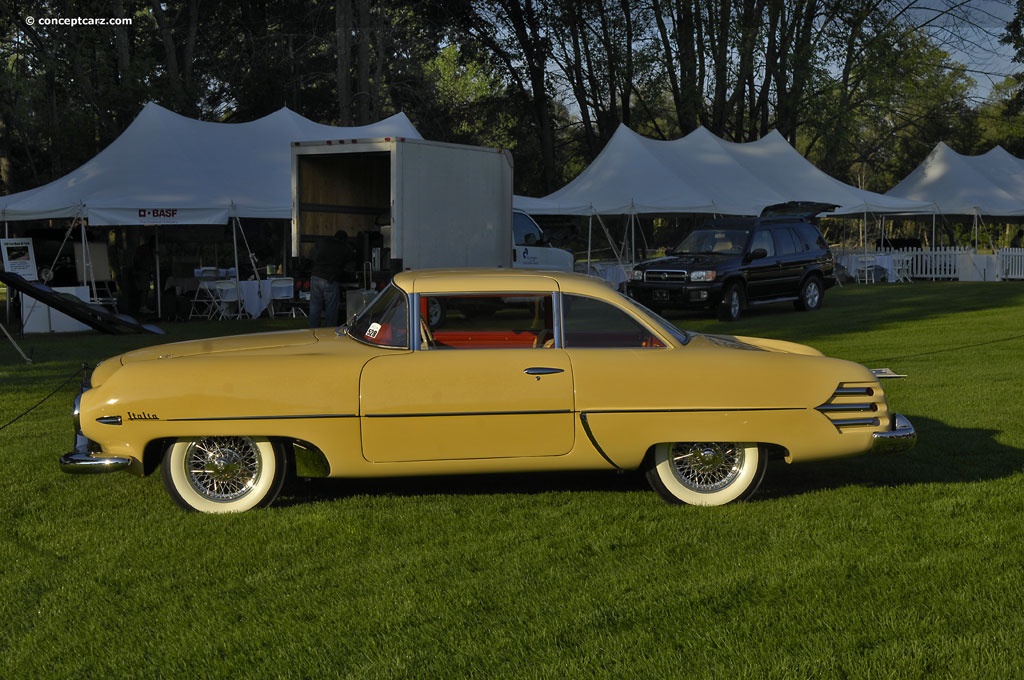
GT Sport Coupe by Touring
View info and history

GT Sport Coupe by Touring
View info and history
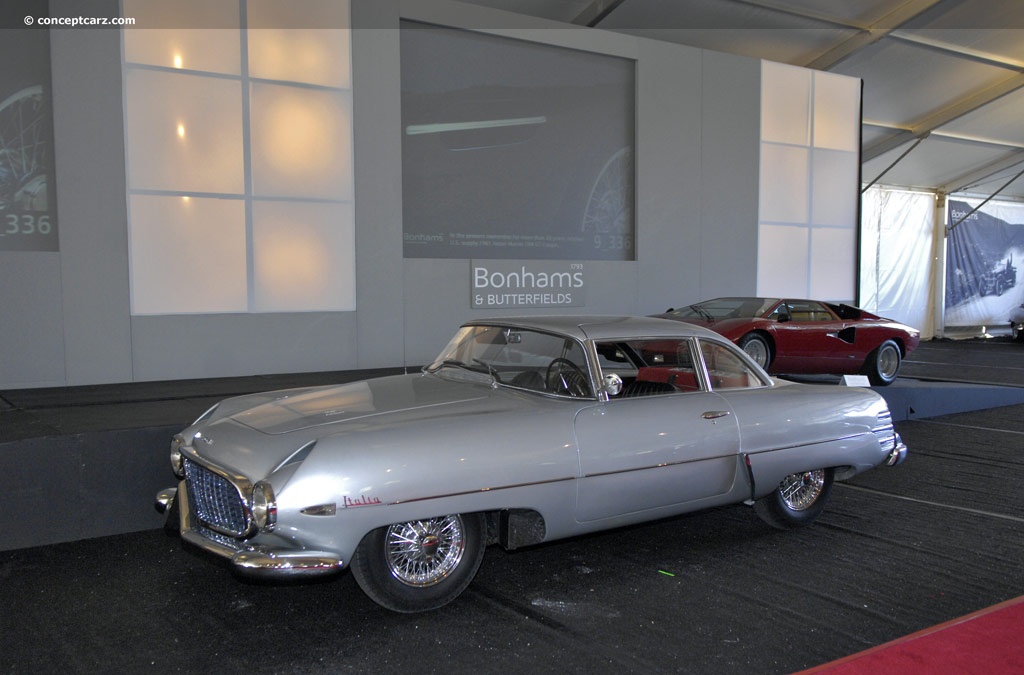
GT Sport Coupe by Touring
Chassis #: IT10011
View info and history
Auction entries : 4
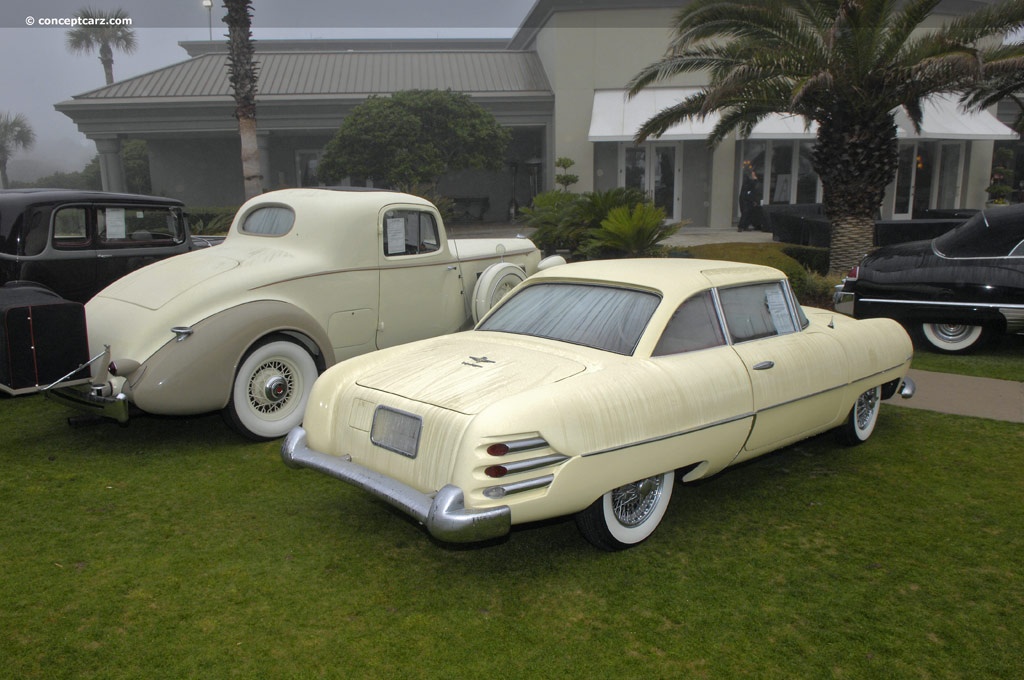
GT Sport Coupe by Touring
Chassis #: IT10011
View info and history
Auction entries : 4
With positive reception from the public and approval from management, 25 Jets were shipped to Touring for bodywork. Now known as the Italia, Hudson debuted its new model at the December 1953 Detroit Auto Show. Production, however, did not commence until August 1954, months after Hudson's merger with Nash-Kelvinator and shortly before the closure of Hudson's Detroit factories. As the first deliveries of the Italia were being made, it was an 'orphan' car. The styling of the Italia differed from the Super Jet, being 10 inches lower and having a large inverted 'V' at the center of the front bumper. There were front brake-cooling air intakes atop the headlamps in V-shaped scoops. Another set of brake-cooling ducts for the rear was located just behind the doors, at the leading edges of the skirted fenders. The triple chrome tubes located at the rear fenders contained the taillights. The Super Jet had overdrive; the Italia did not. Additionally, the production Italia had a different instrument panel and a combination of leather-and-vinyl upholstery. Red was a prominent color throughout the interior, used on the leather seat belts, the non-reflecting dash, the deep-pile Italian carpet, and the bucket seats (the seats were red and white leather). Amenities included a radio and a flow-through ventilation system that was fed via a cowl vent.
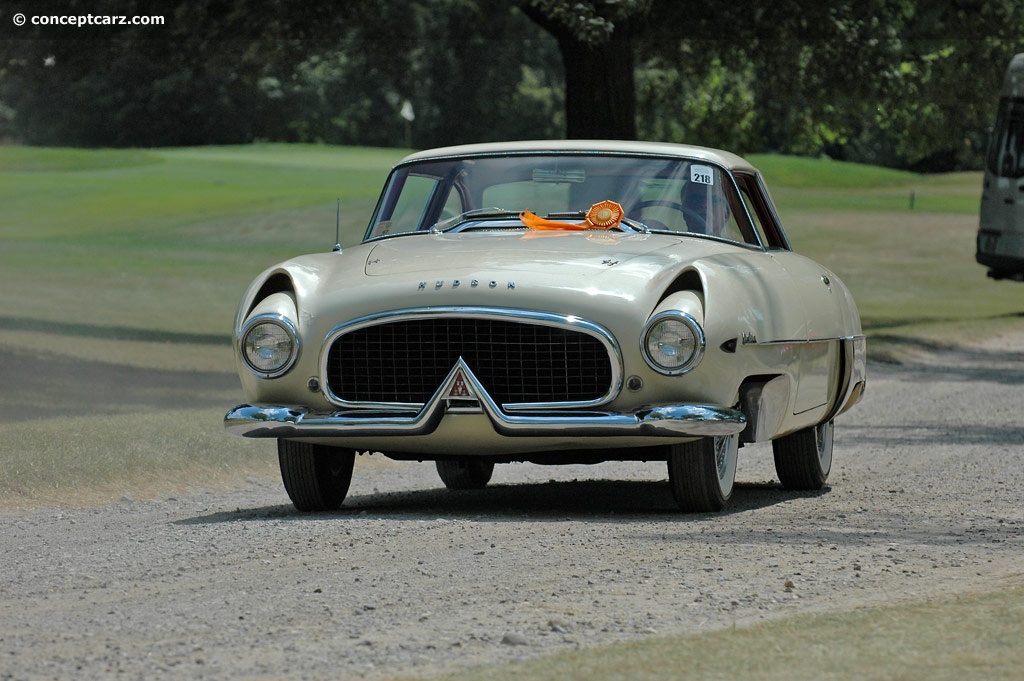
GT Sport Coupe by Touring
View info and history
The hand-built Italia was priced at US$4,350 at the New York port of entry (POE) or $4,800 FOB Detroit. This meant the Italia was one of the most expensive automobiles in the United States.

GT Sport Coupe by Touring
Chassis #: IT10003
Engine #: IT10001
View info and history
Auction entries : 1
by Daniel Vaughan | Jun 2024
Related Reading : Hudson Italia History
Produced by the Hudson Motor Car Company of Detroit, Michigan, the Hudson Italia was a compact car with limited production capacity. It was designed by Frank Spring in cooperation with Carrozzeria Touring of Italy during the 1954 and 1955 model years. Toying around with the design for an Experimental Sports Car, Frank worked closely with Carlo Felice Bianchi Anderloni, the chief designer of Touring....
Continue Reading >>
Continue Reading >>
1954 Hudson Italia Vehicle Profiles
Recent Vehicle Additions
Performance and Specification Comparison
Price Comparison
$1,930 - $1,950
$2,570 - $3,285
Italia Specification Comparison by Year
Year
Production
Wheelbase
Engine
Prices
Related Automotive News

Past Best of Show Winners at The Pebble Beach Concours d'Elegance
overview1
The 70th anniversary of the Pebble Beach Concours dElegance was celebrated with a spectacular display of previous Best of Show winners. Thirty-seven examples graced the showfield and many were still with the same owners who raised the trophy...

Donald Campbell's DB4 GT Speeds into Bonhams Goodwood Revival Sale
A rare 1961 Aston Martin DB4 GT, one of only 45 right-hand drive examples produced and first privately owned by Donald Campbell CBE, the world land and water speed record breaker, is to be offered at the Bonhams Goodwood Revival Sale on Saturday 14 September,...

Lamborghini Polostorico At Retromobile 2017 With The First Restored 350 GT
SantAgata Bolognese, 8 February 2017 – Lamborghini PoloStorico participates for the first time at Rétromobile 2017, the international classic car exhibition held in Paris from 8 to 12 February. The Lamborghini 350 GT chassis number 0121, one...

2015 Pebble Beach Concours d'Elegance Best of Show
PEBBLE BEACH, Calif. (August 17, 2015) -- An Italian Isotta Fraschini Tipo 8A Cabriolet that once turned heads and garnered top prizes in the classic era glided to victory at the 65th Pebble Beach Concours dElegance on Sunday.
The competition...

POW! BAM! ZOOM! The Original 1966 TV Batmobile To Cross Auction Block At Barrett-Jackson Scottsdale
Holy Grail of TV Star Cars to be Sold for First Time January 19, 2013
Barrett-Jackson, the Worlds Greatest Collector Car Auctions™, announced today that it will offer one of the most recognized and popular pieces of entertainment history worldwide,...





























